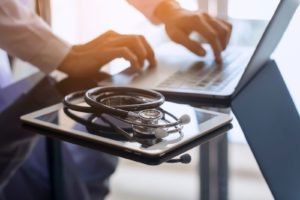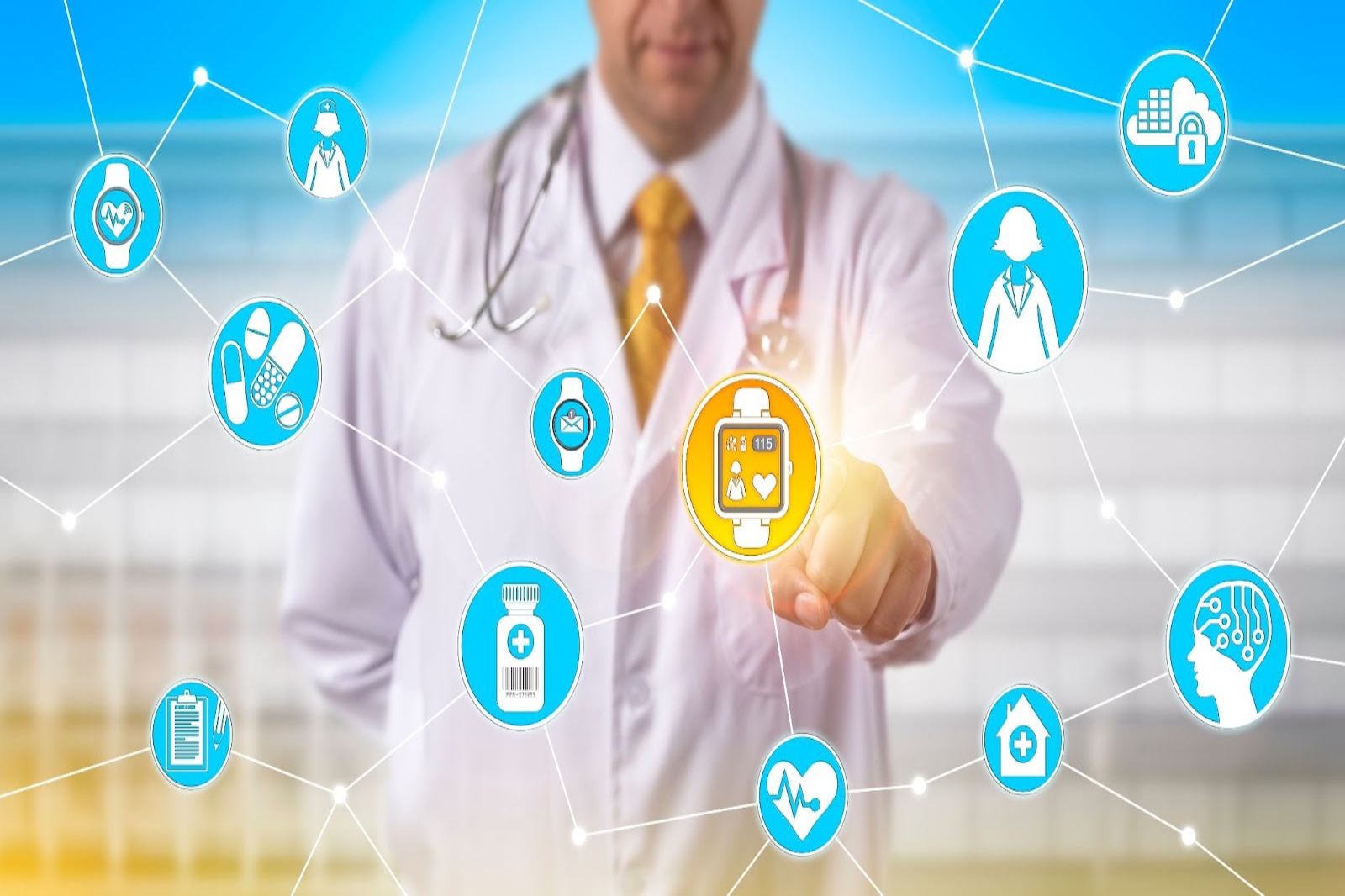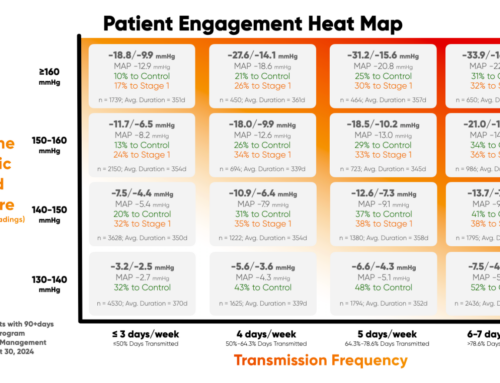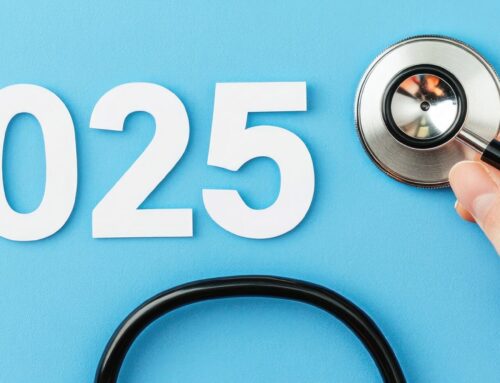The public health system in the US has traditionally focused on acute interventions, while the support for managing chronic diseases has been significantly limited. Chronic conditions account for almost three-fourths of the total healthcare spending in the country and two out of three deaths occur due to just five chronic diseases: cancer, heart disease, stroke, COPD, and diabetes.
Considering these facts, chronic disease management with the help of virtual care should be a top priority. Both the patients and healthcare providers are increasingly receptive to the use of Virtual Care Management Platforms, including remote patient monitoring (RPM) for regular chronic disease management. Virtual care solutions not only create more reimbursement opportunities for healthcare providers, but also give access to comprehensive patient data for more effective care delivery, better care coordination, and improved health outcomes.
Major Types of Virtual Care Management Programs

Advanced remote patient monitoring platforms are bringing together innovative cellular RPM devices and services to improve the virtual care capabilities of healthcare organizations and enable patients to receive more connected care and attention outside of the clinic or hospital. At the same time, patients in under-served populations can also access care management services with the use of virtual care strategies.
To support and promote these digital systems, the Centers for Medicare and Medicaid Services (CMS) is focused on providing new and expanded reimbursement options for virtual care management programs that enable better management of chronic conditions while the patient stays at home. However, increased CMS support also means a greater number of rules for billing and coding, which healthcare providers must keep up with.
1. Remote Patient Monitoring or RPM
One of the key emerging sub-categories of telehealth and virtual care is remote patient monitoring, which enables healthcare providers to obtain patient-generated health data (PGHD) through the use of cellular remote patient monitoring devices and other communication technologies in order to monitor the patient’s chronic condition and deliver targeted and timely care.
Some of the important physiological data and information that a good cellular RPM program can provide include blood pressure levels, blood sugar levels, blood oxygen saturation levels, pulse rate, body weight fluctuations, and body temperature. Using a connected remote monitoring device, real-time patient data can be transmitted to the care team, which can analyze the information to provide appropriate and timely care.
Remote monitoring technology has proved to be highly effective for patients that may require chronic care management, post-surgery care, or senior care. The availability of large amounts of patient data allows the HCOs to make more effective interventions to improve the patient’s health and quality of life. At the same time, it reduces patient visits to the clinic and hospitalizations, while improving patient-doctor engagement. Business organizations may also use RPM programs to track workers’ compensation cases and ensure the sick or injured workers are on the right path to recovery.
Care managers can leverage the power of RPM to deliver population health management services in areas where community resources are limited. Family services, community services, and health services at affordable health care costs encourage patients to seek timely medical attention, minimize their health risks, and improve patient engagement.
Technology Used in RPM
Remote patient monitoring programs involve the use of advanced RPM platforms and connected RPM devices. Cellular technology has emerged as a gold standard for RPM devices, providing reliable connectivity, wide-ranging access, ease of use, and cost-effectiveness for the patients and healthcare providers. With the integration of remote patient monitoring into the electronic health record systems, it is possible to fill gaps in care planning and deliver more efficient and seamless care.
Examples of commonly used cellular RPM devices include:
- Blood pressure monitors
- Glucometers
- Pulse Oximeters
- Weight scales
- Thermometers
#2. Hospital-at-Home or HaH
HaH (hospital-at-home) is an innovative care model designed to help patients get access to hospital-grade medical care at their place of residence. Johns Hopkins Schools of Medicine and Public Health developed the safe and effective HaH model, which has been tested at many medical centers successfully nationwide. This high-quality care model is adopted by caregivers and patients alike and is recognized for improved care, reduction of complications, and lower costs by almost one-third.
Hospital-at-Home program serves as a comprehensive substitute for acute hospital care to treat older adults with acute conditions while improving treatment quality and patient outcomes. In comparison to hospitalized patients, similar HaH patients experience lower mortality rates and reduced use of delirium sedative drugs. It produces better functional outcomes, higher patient satisfaction, and lower caregiver stress.
In 2020, CMS launched Acute Hospital Care at Home (HaH) program, which helped free up hospital bed capacity in the backdrop of the Covid-19 pandemic. Since then, the use of HaH has rapidly increased. HaH is delivered remotely with 24/7 backend support from clinicians and care teams. The program may be an ideal fit for patients that are candidates for hospitalization, but whose condition is stable enough to be treated at home.
HaH is frequently used for patients with chronic diseases, such as heart disease, COPD, cancer, kidney disease, stroke, diabetes, septicemia, Alzheimer’s disease, multiple sclerosis, or serious injuries. As of April 2021, 53 health systems and 116 hospitals in 29 states were participants in the Acute Hospital Care at Home program. HaH fee-for-service model is typically followed by transitional care management (TCM), which is a payment model of CMS for a period of 30 days following patient discharge.
Technology Used in HaH
The Hospital at Home model makes use of a custom combination of telehealth services and remote patient monitoring (RPM). Considering the high degree of medical care delivered through this program, it is important to use hospital-level RPM devices that are capable of capturing patient data in real-time and on a continuous or periodic basis.
#3. Remote Therapeutic Monitoring or RTM
RTM or remote therapeutic monitoring is a program devised to manage conditions with the help of medical devices which can gather and transmit “non-physiological” patient data. The American Association introduced the RTM concept in 2020. Until now, CMS has not clearly defined what could be regarded as non-physiological data.
But the proposed rule for Medicare Physician Fee Schedule 2022 suggests that the objective of RTM is to monitor patients with certain health conditions who can benefit from remote monitoring beyond the general confines of remote patient monitoring. CMS has indicated in the proposed rule that non-physiological data may potentially include respiratory system status, musculoskeletal system status, medication/therapy adherence, and medication/therapy response.
Remote therapeutic monitoring enables care providers and therapists to receive and manage data related to the patient’s physical status, therapy, and medication adherence, and deliver data-driven therapy in the form of coaching sessions or patient education. Therapy-centric care with RTM could include therapy for certain health conditions or therapy post-discharge following surgery or serious injury.
CMS-reimbursed medical conditions so far include chronic respiratory conditions, such as chronic obstructive pulmonary disease (COPD), and musculoskeletal conditions, such as recovery after a surgery or injury. In the times to come, health analysts expect CMS to expand the list of therapies covered under remote therapeutic monitoring.
It is noteworthy that according to the CMS proposed rule, RPM and RTM are considered to be two different concepts. The implications include:
- Healthcare providers that are ineligible to bill for remote patient monitoring might be eligible to bill for remote therapeutic monitoring.
- RTM data is obtainable through medical devices designed to measure non-physiological patient data.
- Under its current definition, RTM covers patient-generated data, with the assumption that code requirements are fulfilled.
Technology Used in RTM
Remote therapeutic monitoring involves the use of technological systems, platforms, or devices aimed at performing targeted patient monitoring and/or tasks related to patient communication and engagement. Some of the RTM devices may be the same that are currently in use for RPM programs. In the case of remote therapeutic monitoring, the patient education component of the medical therapy may be delivered using telehealth, mobile apps, or simply telephonic talk.
#4. Chronic Care Management or CCM

Chronic care management involves managing patients with chronic diseases, such as cardiovascular disease, cancer, or kidney disease. In that sense, chronic care management is not very different from RPM. But one key difference between the two is that, unlike RPM, chronic care management does not involve the need to monitor the vital signs on a continuous basis.
The role of chronic care management extends beyond a regular visit to the doctor’s office. It includes ongoing patient assessment, assistance, and guidance. With an objective to help patients manage their chronic diseases, CCM primarily involves nurses who will call up the patient to check on their condition, coordinate care, and provide coaching.
Chronic care management is similar to remote patient monitoring in the sense that it benefits patients with chronic conditions, such as heart disease, cancer, stroke, diabetes, kidney disease, chronic respiratory conditions, septicemia, pneumonia, influenza, Alzheimer’s disease, and post-injury recovery.
Technology Used for CCM
Similar to remote patient monitoring, chronic care management may involve the use of different technologies and systems. However, unlike RPM, the need for the use of technology is quite limited. Care teams can call up the patient using a telephone and can use a software program or app to update the care plan. CCM also involves the use of other devices, such as a time tracker, which can be integrated into the electronic health record system.
#5. Principal Care Management or PCM
The Centers for Medicare and Medicaid Services (CMS) launched a new program in 2020, which is called PCM or Principal Care Management. The goal of this service is to deliver additional care to patients that have been diagnosed with one chronic condition or enable healthcare providers to treat patients diagnosed with multiple chronic diseases by singularly focusing on just one of those chronic diseases.
In the past, CMS allowed reimbursement under the CCM program only when a practitioner would treat a patient with at least two chronic conditions. However, many medical practitioners do treat patients who are diagnosed with a single chronic condition. Principal Care Management (PCM) has been put in place to fill this gap.
One of the key objectives of PCM is to focus on the patient’s chronic condition as fast as possible and deliver targeted care to stabilize their condition. This can enable the overall patient care to be restored quickly to the primary care doctor, thereby considerably bringing down the healthcare costs for the patient.
With nearly 60% of Americans having a single chronic condition, the PCM program is set to benefit large sections of the population. Just like CCM, it is expected that PCM will also have a significant impact and become an integral constituent of primary care. It will lead to improved patient outcomes and a lowering of healthcare costs.
Billing, Coding, and Compliance
#1. Remote Patient Monitoring (RPM)
Unlike CCM, remote patient monitoring (RPM) allows for reimbursement to healthcare organizations for providing remote monitoring and care to patients via devices (such as BP monitors and glucometers) that collect physiologic data. The CPT codes for RPM cover reimbursement for the collection and analysis and interpretation of the essential physiological data.
According to CMS requirements, the physiologic data from RPM devices should be electronically obtained and transmitted for billing for these codes. In other words, patients cannot self-report the data. The reimbursement rates for 2022 for CPT codes for RPM include:
- CPT Code 99453
- It covers the initial device setup, including educating the patient about how to use the RPM device.
- Medicare Rate for 2022 = $19 (one-time)
- CPT Code 99454
- It covers monthly remote monitoring along with daily measurements. At least 16 days of remote monitoring is required per 30-days.
- Medicare Rate for 2022 = $56 (once per 30-days)
- CPT Code 99457
- It covers the first 20 minutes of interactive patient communication and care management in a calendar month.
- Medicare Rate for 2022 = $50 (once per month)
- CPT Code 99458
- It covers each additional 20 minutes of time utilized for remote monitoring and care management services.
- Medicare Rate for 2022 = $41 (per additional 20 minutes per month)
#2. Remote Therapeutic Monitoring (RTM)
The CPT RTM code changes for 2022 along with the inclusion of new RTM codes have extended Medicare coverage for patients beyond the scope of RPM. The latest 2022 CPT codes for RTM have been created to support healthcare providers that are not eligible to bill for RPM. Remote therapeutic monitoring CPT codes for 2022 are as follows:
- 98975: It covers initial setup as well as patient education to use the RTM equipment.
- 98976: Device supply with scheduled recording and/or transmission of programmed alerts for therapeutic monitoring of the respiratory system – every 30 days.
- 98977: Device supply with scheduled recording and/or transmission of programmed alerts for therapeutic monitoring of the musculoskeletal system – every 30 days.
- 98980: Remote monitoring and treatment management services for the first 20 minutes involving at least one patient-caregiver interactive communication during the calendar month.
- 98981: Remote monitoring and treatment management services for the additional 20 minutes involving at least one patient-caregiver interactive communication during the calendar month.
#3. Chronic Care Management (CCM)
For CCM, the base 2022 CPT code 99490 requires that the patient should have at least two chronic conditions, and receive CCM services for a minimum of 20 minutes from the clinical staff within a month. Billing of 99490 and 99491 in the same month is not allowed.
- 99490: Involving clinical staff for the initial 20 minutes – Rate for 2022 @ $64.03
- 99439: Involving clinical staff for every additional 20 minutes – Rate for 2022 @ $48.45
- 99491: Involving a physician or non-physician practitioner for the initial 30 minutes – Rate for 2022 @ $86.18
- 99437: Involving a physician or non-physician practitioner for every additional 30 minutes – Rate for 2022 @ $61.26
#4. Can the CPT Codes be Used Together?
It is possible for one patient to be eligible for a remote monitoring program (RPM or RTM) as well as chronic care management at the same time. According to CMS, remote monitoring services, whether RPM or RTM, can be valuable for care delivery to patients with complex chronic conditions, which are covered under CCM, and should be included for patient care management services. However, the same time spent in providing care will not apply to both. Double counting of time is not permitted, and each code’s time requirements should be separately fulfilled.
Choose HealthSnap’s All-in-One Integrated Virtual Care Platform
Integrated Virtual Care Management, like remote patient monitoring and chronic care management, is redefining value-based care, and HealthSnap’s Virtual Care Platform makes it easy to start and scale virtual care management programs. Our custom suite of cellular remote monitoring devices along with our patented platform can provide your care teams with everything they need for the management of chronic conditions in an efficient, cost-effective way.
With HealthSnap, healthcare providers can improve the quality of patient care and build more trusted patient-care provider relationships, while cutting down on administrative time and costs.
To learn more about how HealthSnap can help your organization achieve its care management goals, call us at 888-780-1872 or schedule a personalized RPM consultation for your practice!






